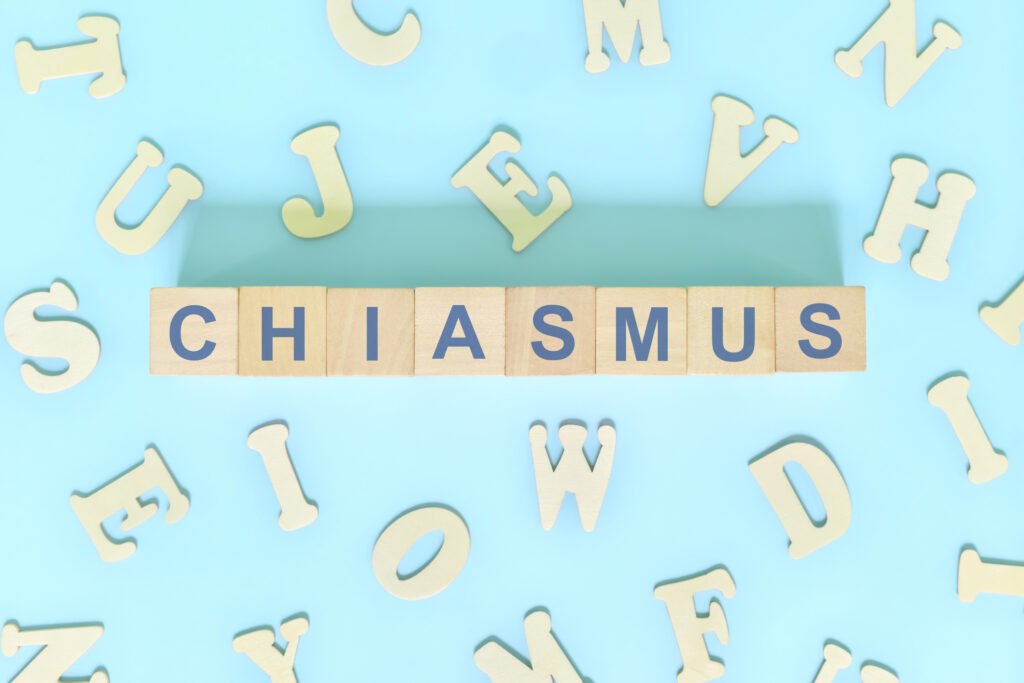
Chiasmus is a rhetorical device in which two or more clauses are balanced against each other by reversing their structures. It is a powerful literary technique used to create an artistic effect and to emphasize the relationships between ideas. Originating from the Greek word “χιάζω” (chiázō), meaning ‘to shape like the letter X,’ chiasmus is characterized by a specific syntactical inversion that enhances the elegance and memorability of language. This technique is prevalent in classical rhetoric, literature, speeches, and everyday sayings.
Defining Chiasmus
Chiasmus involves a criss-cross arrangement of terms or ideas, often summarized as an “ABBA” structure. This pattern does not merely mirror phrases but strategically inverts them to draw attention to their significance or to highlight a contrast or comparison. Unlike antithesis, which juxtaposes opposing ideas without syntactic mirroring, chiasmus reverses grammatical structures to enhance its rhetorical impact.
Examples of Chiasmus
- Literary Example: In Shakespeare’s “Julius Caesar,” the line “But Brutus says he was ambitious; And Brutus is an honorable man” subtly uses chiasmus to question Brutus’s claim and his honor simultaneously.
- Famous Speech: John F. Kennedy’s inaugural address included “Ask not what your country can do for you—ask what you can do for your country,” a classic example of chiasmus used to inspire and motivate.
- Everyday Saying: A typical example is, “Never let a fool kiss you or a kiss fool you.”
Purposes and Effects of Chiasmus
- Emphasis: Chiasmus highlights connections or contrasts between concepts, making the message more striking and memorable.
- Balance and Rhythm: The symmetrical structure lends a pleasing rhythm and balance to the language, making the text or speech more poetic and enjoyable.
- Persuasion and Clarity: By framing ideas in a mirrored structure, chiasmus can make arguments more persuasive or clarify a point through its balanced form.
Using Chiasmus Effectively
To employ chiasmus effectively in writing or speech, consider the following tips:
- Purposeful Placement: Use chiasmus at climactic moments or key points to maximize its impact on the audience.
- Balance and Parallelism: Ensure the mirrored phrases are structurally balanced to achieve the desired rhythmic and rhetorical effect.
- Contextual Relevance: The chiasmus should enhance the message’s clarity or emotional impact, not just serve as a decorative element.
Chiasmus Across Genres
- Poetry and Literature: Poets and writers use chiasmus to add lyrical quality to their works and to deepen thematic connections.
- Speeches and Public Addresses: Speakers often incorporate chiasmus to leave a lasting impression on their audience, making key points more memorable.
- Advertising and Media: Marketers and advertisers use chiasmus to create catchy and effective slogans that are easy to remember.






